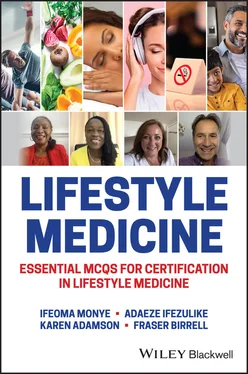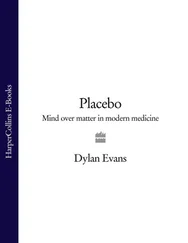23 Which of the following best describes the intensity component of the Lifestyle Medicine treatment intensity program?Amount of contact hours during the programAmount of days spent on the program Amount of physical activities on the programAmount of whole food plant‐based options in the program
24 A 58‐year‐old man, diagnosed with Type 2 Diabetes 20 years ago, recently moves into the area and registers as a new patient in the primary care clinic. His BMI is 40. He has dyslipidaemia, severe left hip pain, and is desperate to have Lifestyle Medicine interventions for his condition. For the past five years, his treatment consists of Soluble Insulin, Metformin, and Atorvastatin. Based on the current evidence, which of the following will be the most effective option of therapeutic lifestyle intervention treatment for him now?Intensive therapeutic lifestyle change treatmentIntensive therapeutic lifestyle change treatment followed by therapeutic lifestyle changeNon‐intensive therapeutic lifestyle change treatmentNon‐intensive therapeutic lifestyle change treatment followed by therapeutic lifestyle change
25 In the scientific foundation of the Healthy Doctor = Healthy Patient project (Frank et al. 2013), which of the following most accurately represents the findings in this study?Counselling patients makes a difference in patients’ habits and in their healthNorth American physicians tend to live just as long as their peersPhysicians live longer than their contemporaries because they have access to better medical carePhysicians with poor health habits are more likely to advise their patients about preventive habits
1 C The website of the American College of Lifestyle Medicine provides a definition that states that ‘Lifestyle Medicine involves the use of evidence‐based lifestyle therapeutic approaches such as a predominantly whole food, plant‐based diet, regular physical activity, adequate sleep, stress management, avoidance of risky substance use, and other non‐drug modalities, to prevent, treat, and oftentimes reverse the lifestyle‐related chronic disease that is all too prevalent’. In the 2017 edition of Egger’s textbook, Lifestyle Medicine: Lifestyle, the Environment, and Preventive Medicine in Health and Disease, he defines Lifestyle Medicine as ‘The application of environmental, behavioural (sic), medical, and motivational principles to the management of lifestyle‐related health problems in a clinical and/or public health setting (Rippe 2019, pp. 961–962)’.
2 A Rippe defines Lifestyle Medicine as ‘The integration of lifestyle practices into conventional medicine to lower the risk for chronic disease and, if the disease is already present, to serve as an adjunct to therapy’ (Rippe 2019, pp. 961–962).
3 B There have been several definitions of Lifestyle Medicine by various schools of thought across the global community. The preferred definition may be that authored by Sanger, Katz, Dysinger, and others published in late 2014 in the International Journal of Clinical Practice: ‘Lifestyle Medicine is the evidence‐based practice of helping individuals and communities with comprehensive lifestyle changes (including nutrition, physical activity, stress management, social support, and environmental exposures) to help prevent, treat, and even reverse the progression of chronic diseases by addressing the underlying cause’.
4 C The overall benefits of physical activity on health include higher health‐related fitness, higher control and maintenance of a healthy weight, less risk of disabling medical conditions and less chronic disease rates than people who are inactive. Physical inactivity is the fourth leading risk factor for global mortality. It is the cause of 1 in 10 premature deaths. Ozone therapy is not a component of Lifestyle Medicine. There is no emphasis on the use of supplements in Lifestyle Medicine. Evidence‐based medication use is sometimes used as adjunct to Lifestyle Medicine treatment (Kelly and Shull 2019, pp. 187–191).
5 D A key component of the practice of Lifestyle Medicine is the use of whole food plant‐based nutrition. Several studies have proved that plant‐based nutrition prevents, treats, and oftentimes reverses the course of certain diseases such as hyperlipidaemia, hypertension, coronary artery disease (Ornish et al. 1990), Type 2 Diabetes Mellitus (Barnard et al. 2009), certain cancers (Kelly and Shull 2019, p. 125). A recent EAT‐Lancet Commission series on healthy diets from sustainable food systems, ‘Food in the Anthropocene’ has also highlighted the benefits to the planet of a mainly plant‐based diet (Willett et al. 2019; Tips Box 1.1), which inextricably links health and sustainable development. TIPS BOX 1.1Key Messages from ‘Food in the Anthropocene’Unhealthy and unsustainably produced food poses a global risk to people and the planet. > 820 million people have insufficient food and many more consume an unhealthy diet that contributes to premature death and morbidity. Global food production is the largest pressure caused by humans on Earth, threatening local ecosystems and the stability of the Earth system.Current dietary trends, combined with projected population growth to about 10 billion by 2050, will exacerbate risks to people and planet.Transformation to healthy diets from sustainable food systems is necessary to achieve both UN Sustainable Development Goals and the Paris Agreement. Scientific targets for healthy diets/sustainable food production are needed to guide a Great Food Transformation.Healthy diets have an appropriate caloric intake and consist of a diversity of plant‐based foods, low amounts of animal source foods, unsaturated > saturated fats, and small amounts (if any) of refined grains, highly processed foods/added sugars.Transformation to healthy diets by 2050 will require substantial dietary shifts, including a greater than 50% reduction in global consumption of unhealthy foods such as red meat and sugar, and a greater than 100% increase in consumption of healthy foods such as nuts, fruits, vegetables, and legumes.Dietary changes from current diets to healthy diets are likely to substantially benefit human health, averting ~10.8–11.6 million deaths/year: a reduction of 19.0–23.6%Sustainable food production needs to operate within the food systems’ safe operating space at all scales on Earth. So, production for ~10 billion people should use no additional land, safeguard existing biodiversity, reduce consumptive water use/manage water responsibly, substantially reduce nitrogen/phosphorus pollution, produce zero CO2 emissions, and no methane/nitrous oxide emission increase.Transformation to sustainable food production by 2050 will require ≥ 75% reduction of yield gaps, global redistribution of nitrogen/phosphorus fertilizer use, phosphorus recycling, radical improvements in efficiency of fertilizer/water use, rapid implementation of agricultural mitigation options to reduce greenhouse‐gas emissions, land management practices shifting agriculture from a carbon source to a sink, and a fundamental shift in production priorities.The scientific targets for healthy diets from sustainable food systems are intertwined with all UN Sustainable Development Goals. For example, achieving these targets will depend on providing high‐quality primary health care that integrates family planning and education on healthy diets. These targets and the Sustainable Development Goals on freshwater, climate, land, oceans, and biodiversity will be achieved through strong commitment to global partnerships and actions.Achieving healthy diets from sustainable food systems for everyone will require substantial shifts towards healthy dietary patterns, large reductions in food losses and waste, and major improvements in food production practices.Source: Willett et al. (2019).
6 C Health coaching in Lifestyle Medicine assesses the readiness for change, collaboratively establishing client goals, evaluating successful steps and self‐limiting patterns, reassessing and modifying goals, articulating insights gained, and formulating post‐coaching plan to sustain changes that promote health and wellness. Research has shown that patients who received coaching services demonstrated significant improvements in both physical as well as mental health, with reduction in chronic disease markers (HbA1c, blood pressure, and LDL cholesterol) that persisted one year after completion of the health coaching intervention.Health coaching is an essential component of the practice of Lifestyle Medicine. It has been found to be effective in the treatment of mild‐moderate depression. The coach does not prescribe a management plan for the client. Health coaching can be used to improve personal lifestyle choices regarding weight management and physical activity or sleep (Rippe 2019, p. 236).
Читать дальше












